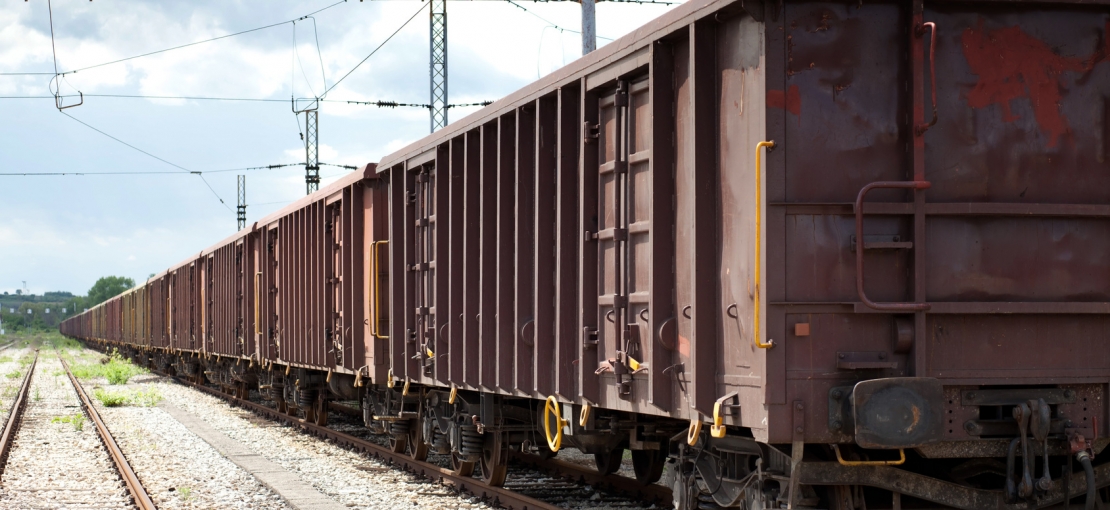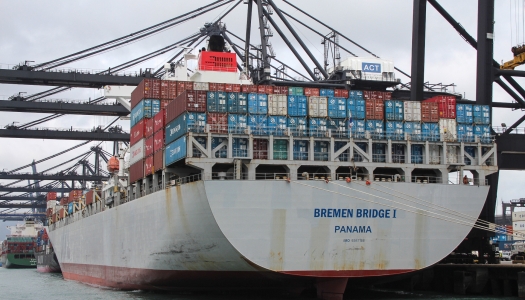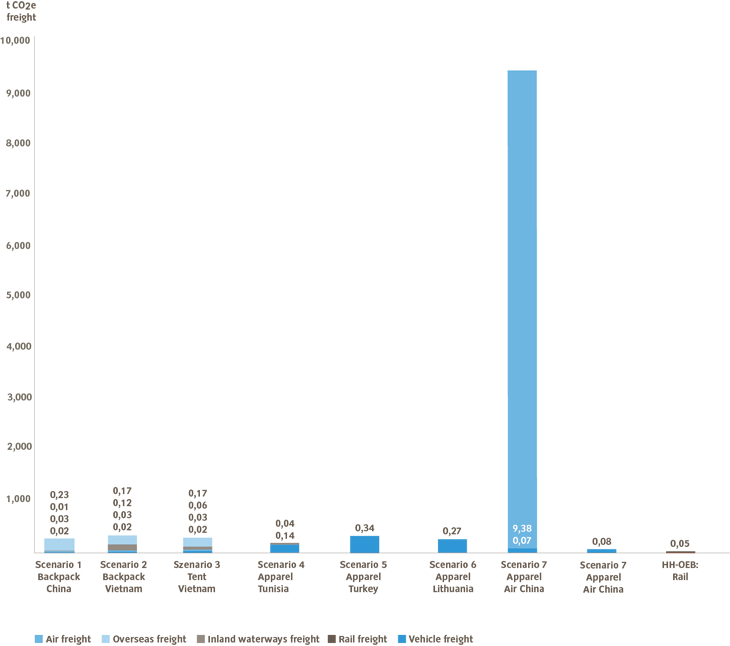
Climate-neutral transportation
Low amount of emissions due to transport by ship
We live and work in a globalized world. Our products travel long distances and this transport is the source of emissions before they arrive at the customer.
Nevertheless, merchandise transport is an indirect environmental aspect at VAUDE with only medium environmental relevance; the greatest percentage of our products travels the longest distances by container ship. This type of transport is responsible for a very low amount of emissions per individual product.
"Travel halfway around the world" – minimal environmental impact
When it comes to public perception however, the transport routes of Asian-made products have a higher relevance. Many people think that transport "halfway around the world" havocs significant environmental damage. In order to give due justice to this perception, we rate the aspect of Transport as significant for our sustainability report.
In addition to the transport of VAUDE products from the manufacturer to the customer, upstream material handling plays a role in the environmental impact as well as business trips and commuting - see "Less emissions from business travel" and "53,672 km by bike to work"
The transport of all VAUDE products includes the following transport channels:
- transport of components and materials to the producers
- transport of products from producer to VAUDE
- transport of products to the customer from VAUDE
Route of materials to the producers
We do not have any impact on the transport of materials from various suppliers to our contract-clothing manufacturers. We help our manufacturing companies find suppliers in their area as much as possible, and want to work to ensure that common, modern low-emission means of transport are used. However, as previously stated, we do not have data on this available.
Majority of products comes by ship
The majority of the products that are sold in Europe are transported by ship from Asian producers to Hamburg. From the port of Hamburg, the products come to Ulm by rail and are then delivered to Tettnang-Obereisenbach by truck. We do not currently, however, have data on this available.

|
"Arrival" by ship
Transport by ship is responsible for minimal emissions, even if the journey does proceed halfway round the world. |
Ecologically, transport by ship and rail makes the most sense. Whenever possible in light of customs legalities, goods are delivered directly from producer to the recipient country, for example, to our customers within Asia - see also "Our Markets".
Nevertheless, air freight is sometimes required in order to deliver goods on time to our customers. Sometimes organizational problems are the reason, which we are continuously trying to optimize.
Offset emissions with myclimate
All relevant logistics data is collected, summarized and analyzed annually by our service providers. Emissions from transport are calculated by myclimate in our annual climate footprint. This helps us assess the evolution of transport and consequent emissions over several years - see also "greenhouse gas emissions in the details" .
In order to objectively evaluate the transport routes of our products in terms of production country and transport used, we had myclimate calculate which of our supplier scenarios causes more emissions. The results have confirmed our predictions.
Emissions per ton freight

Low transport emissions per product
This graphic makes it very clear that based on the weight of an individual product, the emissions of ocean freight are only a tiny fraction per ton of freight. Once products are flown, however, the creation of emissions soars. We understand this relationship and try to reduce air freight to the absolute minimum - for cost reasons.
In 2014, the proportion of air cargo for products received was less than 0.8 percent of the total weight.

Rail transport is more environmentally friendly than truck transport
This graphic also makes an interesting point: truck transportation from the port in Hamburg to the warehouse at the company headquarters in Tettnang-Obereisenbach results in emissions that are almost comparable to those of the sea transport from Asia to Hamburg. So the realization that our service providers really use rail transport as much as possible is very important.
In 2014, we launched a "Green Logistics" project in which we want to work together to optimize our logistics service transport in light of sustainability and emission considerations. This project will be continued in 2015.
Products from VAUDE to customers
At our own warehouse in Tettnang-Obereisenbach we have high impact on this indirect environmental aspect. However, these processes have already been largely optimized through modern technology; deliveries from the central warehouse in Obereisenbach to our customers (retailers) are pack volume-optimized and collected by truck - see also "emissions offset".
Improved data base for logistics service providers
On the whole, we believe our approach is acceptable for the transport that we are responsible for. EMAS verification gives us security here and it is validated by the calculations that myclimate makes annually on our carbon footprint.
The quality of data of logistics service providers has improved significantly in recent years. However, service providers’ varying methods of collecting data for us make it difficult to summarize and interpret the data. In the future we will try to achieve better measurability of the data with the single unit tkm (tonne-kilometers).
By making compensation payments to myclimate, all logistics related to the production in Tettnang-Obereisenbach are climate neutral, including the delivery of all materials, the internal transfer to storage, and shipping of the products to retailers.
| GRI: | DMA Transport |
| GRI: | EN30 |




